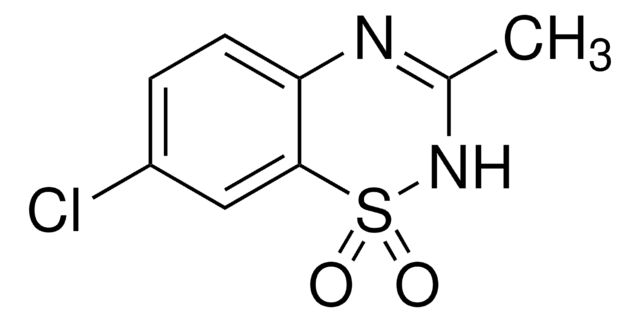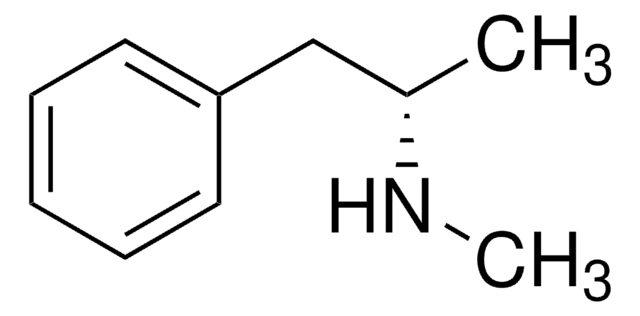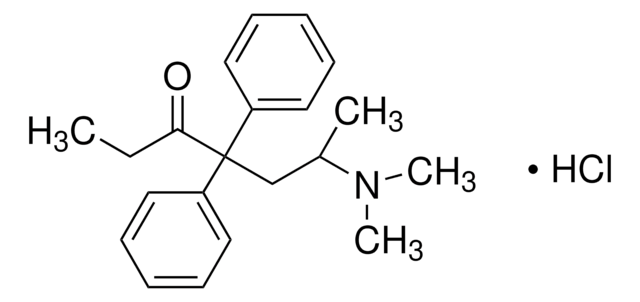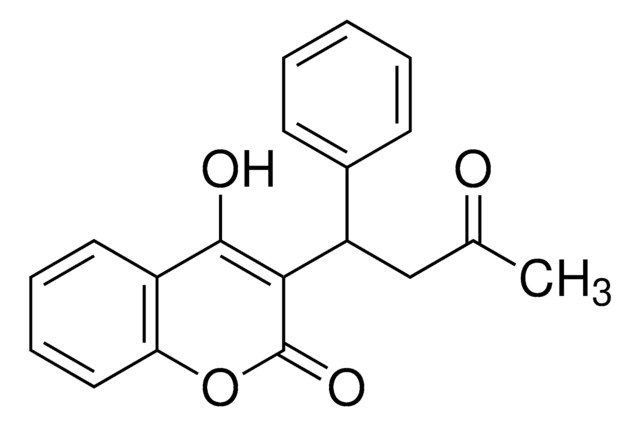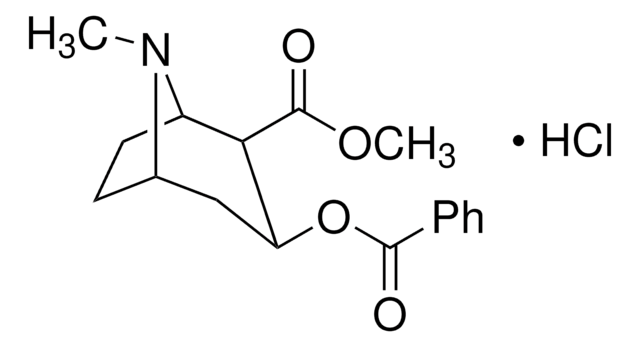P154
Pinacidil monohydrate
powder
Synonym(s):
(±)-N-Cyano-N′-4-pyridinyl-N″-(1,2,2-trimethylpropyl)guanidine monohydrate
About This Item
Recommended Products
form
powder
Quality Level
color
white to beige
solubility
DMSO: 15 mg/mL, clear
45% (w/v) aq 2-hydroxypropyl-β-cyclodextrin: 40 mg/mL
SMILES string
O.CC(N\C(Nc1ccncc1)=N\C#N)C(C)(C)C
InChI
1S/C13H19N5.H2O/c1-10(13(2,3)4)17-12(16-9-14)18-11-5-7-15-8-6-11;/h5-8,10H,1-4H3,(H2,15,16,17,18);1H2
InChI key
AFJCNBBHEVLGCZ-UHFFFAOYSA-N
Gene Information
human ... ABCC9(10060) , KCNJ11(3767)
mouse ... Kcnj11(16514)
rat ... Kcna1(24520) , Kcnj1(24521) , Kcnj11(83535) , Kcnj5(29713) , Kcnj8(25472)
Looking for similar products? Visit Product Comparison Guide
Application
- in repolarization studies by infusing into left anterior descending artery (LAD)
- to induce ATP-sensitive K+ (KATP) current in ventricular myocytes for electrophysiological studies
- as a KATP opener to treat myocardial cells
Biochem/physiol Actions
Signal Word
Warning
Hazard Statements
Precautionary Statements
Hazard Classifications
Acute Tox. 4 Oral - Eye Irrit. 2 - Skin Irrit. 2 - STOT SE 3
Target Organs
Respiratory system
Storage Class Code
11 - Combustible Solids
WGK
WGK 3
Flash Point(F)
Not applicable
Flash Point(C)
Not applicable
Personal Protective Equipment
Choose from one of the most recent versions:
Certificates of Analysis (COA)
Don't see the Right Version?
If you require a particular version, you can look up a specific certificate by the Lot or Batch number.
Already Own This Product?
Find documentation for the products that you have recently purchased in the Document Library.
Our team of scientists has experience in all areas of research including Life Science, Material Science, Chemical Synthesis, Chromatography, Analytical and many others.
Contact Technical Service